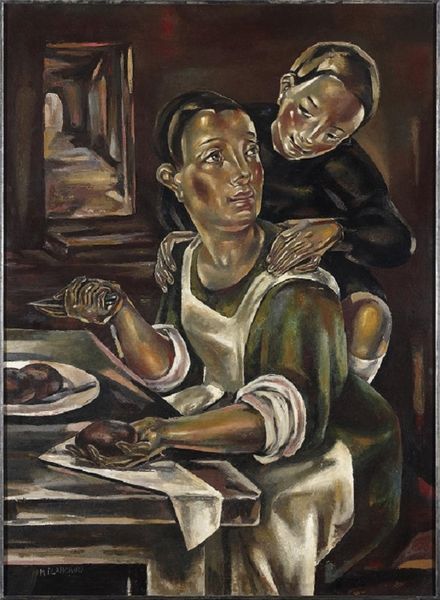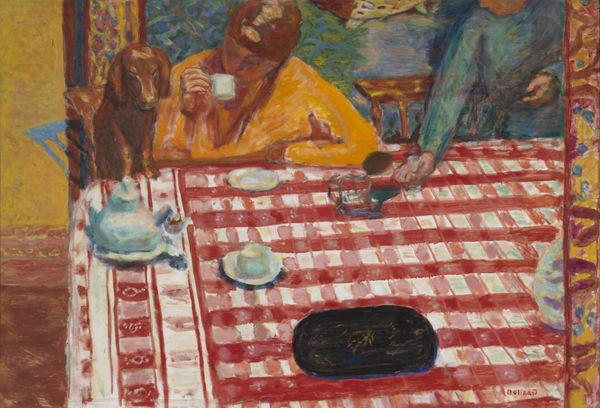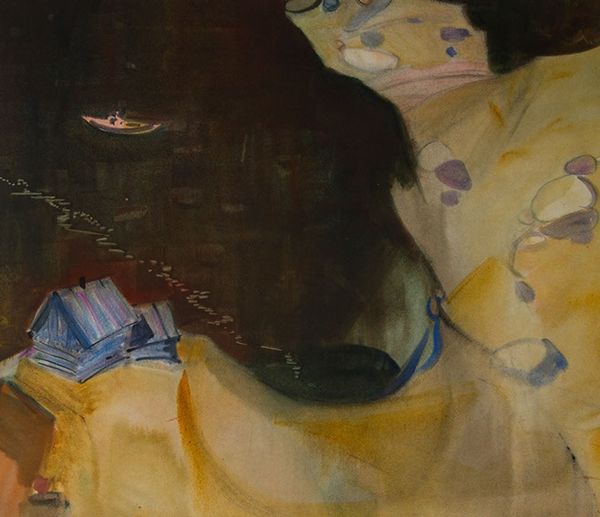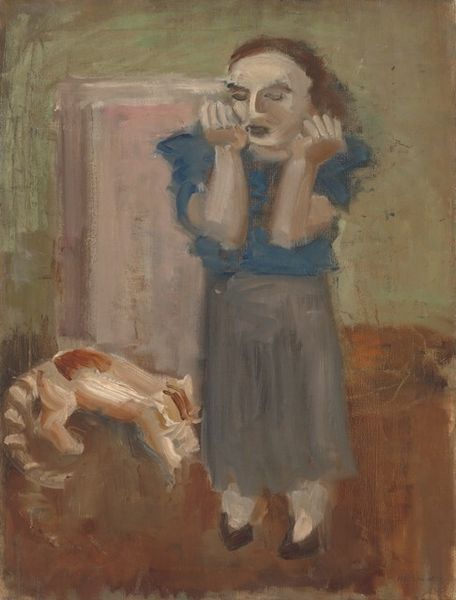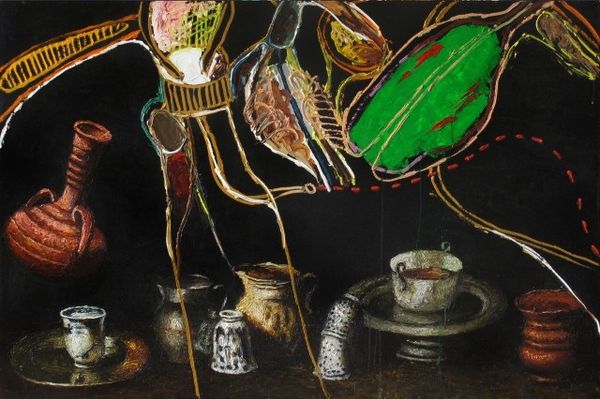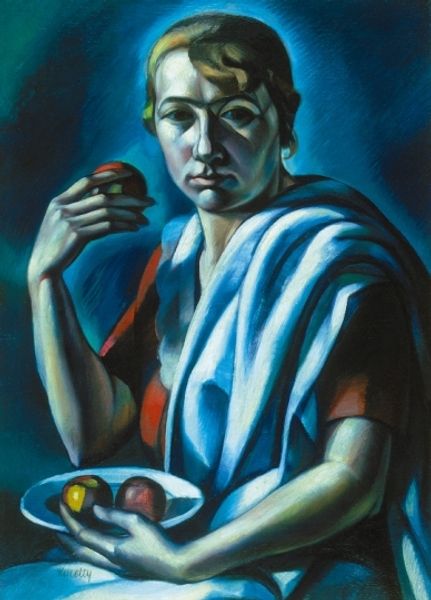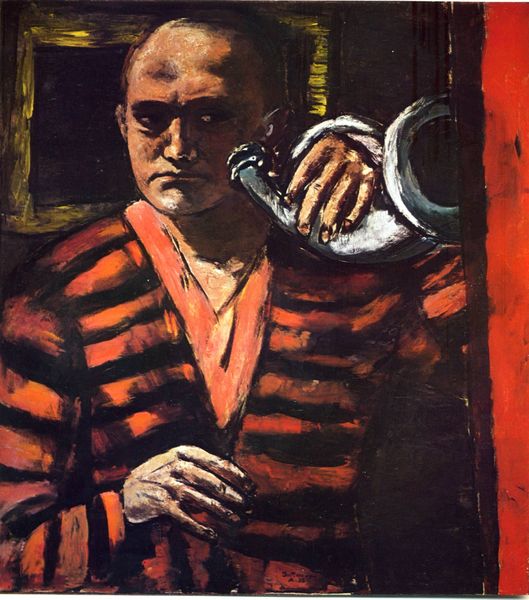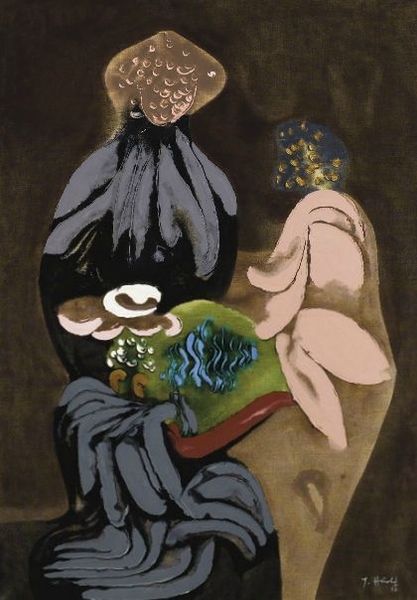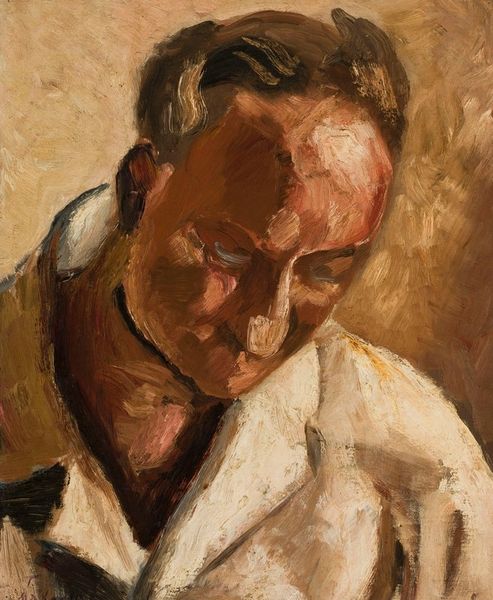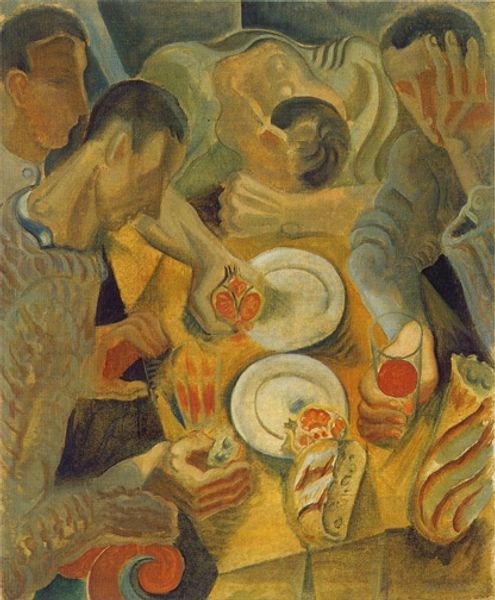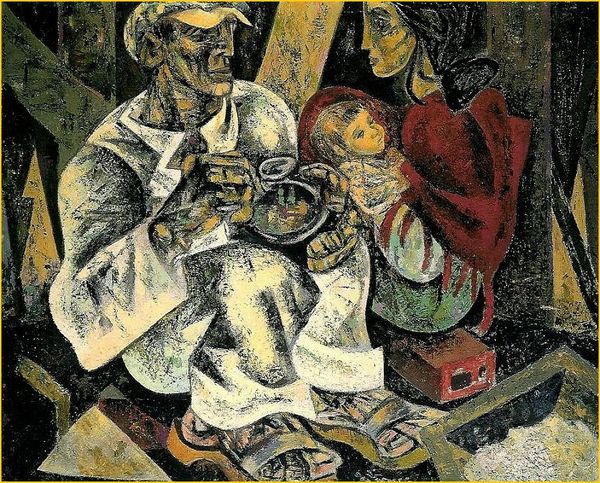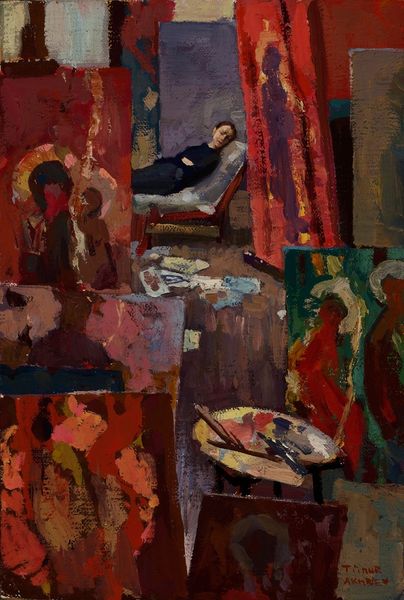
painting, oil-paint
#
painting
#
oil-paint
#
oil painting
#
genre-painting
#
modernism
Copyright: Renato Guttuso,Fair Use
Editor: So, this is "Uomo che mangia gli spaghetti," or "Man Eating Spaghetti," by Renato Guttuso, painted in 1956, and rendered in oil paint. It strikes me as a very visceral image – immediate and raw in its depiction. What do you see in this piece? Curator: I see a powerful statement about the materiality of everyday life and the cultural context of post-war Italy. Consider the bold, almost aggressive application of the oil paint itself. It emphasizes the physicality of both the subject, the man, and his meal. It moves beyond mere representation to engage with the production of meaning. Editor: Could you elaborate on "production of meaning?" Curator: Absolutely. Think about spaghetti itself: simple, affordable, a staple. Guttuso elevates this mundane act of eating into something monumental through his forceful technique. This begs the question of how basic necessities are consumed – both literally and figuratively – within a specific socioeconomic system. Editor: I guess I was initially focused on the emotional expression in his face. So, you're saying that this work prompts a broader analysis of class, labor, and consumerism in post-war Italy? Curator: Precisely! The roughly rendered setting, the seemingly worn clothing, they all speak to the everyday realities for many Italians. Guttuso isn't simply painting a man eating; he's depicting a society grappling with its own reconstruction and the unequal distribution of resources. And it asks you to consider where your own food comes from. Editor: Wow, that is something to think about. I initially missed all of those layers of interpretation completely, by overlooking the role that the material itself plays in this art, in favor of trying to get into the mind of the subject! Curator: Yes, shifting the perspective from individual emotions to socio-economic materials of spaghetti, paints, and table can expand interpretations of everyday-looking objects, as representations and instantiations of the means and labor of material production.
Comments
No comments
Be the first to comment and join the conversation on the ultimate creative platform.

